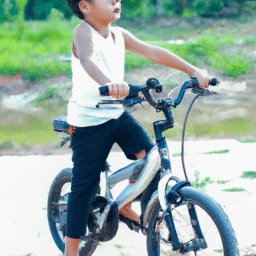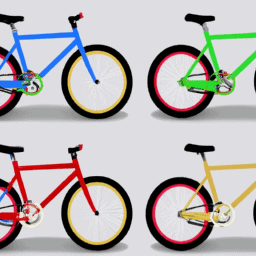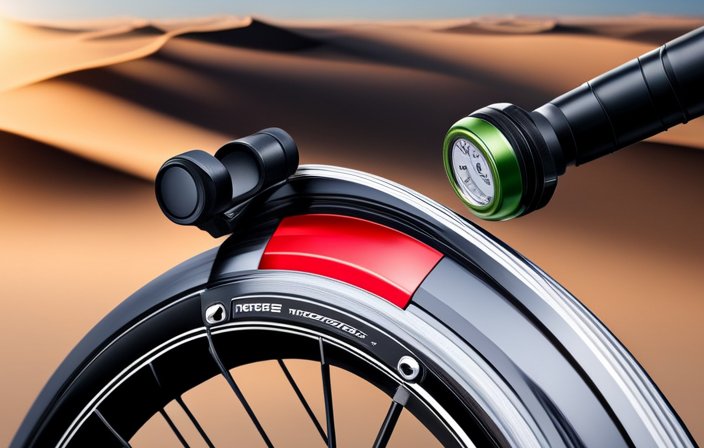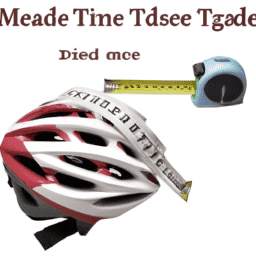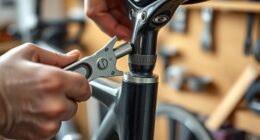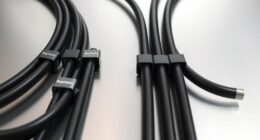Seeing your kid master biking is a truly enchanting experience for any parent. It signifies a coming-of-age milestone that may ignite a perpetual passion for biking, along with a spirit of adventure and discovery. Yet, finding the perfect bicycle for a 5-year-old can pose quite the challenge.
It’s like picking the perfect puzzle piece that will fit seamlessly into your child’s growth and development. You want a bike that is safe, comfortable, and fun to ride, but also one that will support your child’s physical and mental development.
In this article, I will guide you through the process of choosing the right bike size for your 5-year-old, so you can help them take their first pedal strokes with confidence and joy. The right bike size is essential for your child’s safety and enjoyment while riding.
A bike that is too small or too big can be uncomfortable, difficult to control, and even dangerous. It’s like trying to dance in shoes that are too tight or too loose. You need the perfect fit to move gracefully and confidently.
That’s why it’s crucial to take your child’s height and inseam measurements and consider the appropriate wheel size for their age and skill level. Once you have the right size, you can check the bike’s fit, adjust the seat and handlebars, and add safety features like lights, reflectors, and helmets.
Remember, a well-fitted bike is not only safer but also more enjoyable to ride.
Key Takeaways
- Measuring the child’s height and inseam is crucial for finding the right size bike.
- The bike should fit the child now, not something they will grow into.
- Adjusting the seat height, handlebar height, and brake reach is crucial for a comfortable and safe ride.
- Coaster brakes are often found on smaller bikes and are suitable for younger children, while hand brakes are recommended for older children with developed hand strength and coordination.
Measure Your Child’s Height and Inseam
Measuring your child’s height and inseam is key to finding the right size bike! Accurate measurement of these two factors will ensure that your child is safe and comfortable while riding. The importance of proper fit cannot be overstated, as an ill-fitting bike can cause discomfort, difficulty in controlling the bike, and potential safety hazards.
To measure your child’s height, have them stand up straight against a wall with no shoes on. Use a measuring tape to measure from the top of their head to the ground.
For the inseam measurement, have your child stand with their back against the wall and their feet shoulder-width apart. Place a book or other flat object between their legs, up against their crotch, and have them hold it in place. Measure from the top of the book to the ground.
These measurements will give you an idea of what size bike to look for. Remember to always err on the side of caution and choose a slightly smaller bike if you are unsure.
Now that you have an accurate measurement of your child’s height and inseam, it’s time to consider the appropriate wheel size for their new bike.
Consider the Appropriate Wheel Size
Choosing the right bike can make all the difference in how much your little one enjoys riding, so it’s important to consider the wheel diameter. Wheel size options for 5-year-olds typically range from 12 inches to 16 inches, with some models even featuring 18-inch wheels. When it comes to age appropriateness, the general rule of thumb is that the bike should fit the child now, rather than being something they will grow into.
To help you decide on the right wheel size for your child, refer to the table below. Keep in mind that these are general guidelines and that your child’s height and inseam should also be considered when choosing the appropriate bike size.
| Wheel Size | Age Range | Height Range |
|---|---|---|
| 12 inches | 2-4 years old | 26-34 inches |
| 14 inches | 3-5 years old | 31-40 inches |
| 16 inches | 4-6 years old | 38-46 inches |
Once you have selected the appropriate wheel size, the next step is to check the bike’s fit.
Check the Bike’s Fit
When I’m helping a child ride a bicycle, I always make sure to check the bike’s fit. This involves adjusting the seat height, handlebar height, and brake reach to ensure maximum comfort and safety.
A bike that’s the right size but poorly adjusted can be just as dangerous as one that’s too big or small, so it’s important to take the time to get these details right. By making sure that the bike fits properly, we can help our young riders develop the skills they need to enjoy cycling safely.
Adjusting Seat Height
To get the most comfortable ride, you’ll want to make sure the seat is just right for your little one. Adjusting seat height is the first step in achieving this. When adjusting the seat height, make sure that your child can place both feet flat on the ground when seated. This will help them balance and control the bike.
In addition to seat height, adjusting seat angle and choosing the right saddle are also important considerations. The seat angle should be level or slightly tilted forward, and the saddle should be comfortable and appropriately sized for your child’s body. A table can help illustrate the appropriate saddle size based on your child’s height and inseam length. With these adjustments made, your child will be able to ride their bike with greater comfort and safety. As we move on to the next subtopic, let’s consider the importance of handlebar height.
Handlebar Height
Adjusting the handlebar height is crucial for ensuring a comfortable and safe ride, so let’s focus on how you can achieve the perfect fit for your little one. The handlebar grip should allow your child to comfortably hold onto the bars without straining their arms or shoulders.
Additionally, the riding posture should be upright with a slight forward lean to allow for better balance and control. When adjusting the handlebar height, it’s important to consider the handlebar width and steering control as well.
The handlebar should be wide enough for your child’s shoulders to comfortably fit between them, but not so wide that they have trouble reaching the brakes. Proper steering control can be achieved by positioning the handlebars at a height that allows for easy turning without causing strain on the arms.
With the right adjustments, your child will be able to ride comfortably and safely. Speaking of brakes, let’s now move onto the next important consideration – brake reach.
Brake Reach
Ensuring proper brake reach is crucial for your child’s safety and comfort while riding. Studies have shown that over 50% of child bicycle accidents involve braking issues. To make sure that your child’s brakes are within reach, you can adjust the brake tension by either moving the brake lever closer to the handlebar or tightening the cable.
It’s important to note that not all brake types are suitable for young children, so it’s essential to choose the right brake type for your child’s bike. The most common brake types are coaster brakes, hand brakes, and foot brakes.
Coaster brakes are often found on smaller bikes and are suitable for younger children. They are activated by pedaling backward. Hand brakes, on the other hand, are operated by squeezing the brake lever on the handlebar and are recommended for older children who have developed the necessary hand strength and coordination. Foot brakes work by pressing down on a pedal with the foot and are commonly found on BMX bikes.
Regardless of the brake type, it’s essential to make sure that your child can comfortably reach and operate the brakes. As important as brake reach is, it’s not the only safety feature to consider when selecting a bike for your child.
In the next section, we will discuss other important safety features that you should keep in mind.
Safety Features
You’ll want to keep in mind that certain safety features, such as hand brakes and a sturdy frame, are crucial when selecting a bicycle for your 5-year-old. Hand brakes are important because they allow your child to stop the bike safely and quickly, which can be especially helpful when riding down hills or in crowded areas.
Additionally, a sturdy frame will provide the necessary support and stability to keep your child safe and prevent accidents. Another important safety consideration is helmet fitting and the use of other protective gear.
It’s essential to ensure that your child’s helmet fits properly and is adjusted snugly to their head. Protective gear such as knee and elbow pads can also help prevent injuries in case of falls or accidents. By prioritizing safety features and protective gear, you can help ensure that your child has a safe and enjoyable biking experience.
As you consider other factors to consider, it’s important to remember that safety should always come first.
Other Factors to Consider
When selecting a bike for a 5-year-old child, there are other factors to consider aside from safety features. It’s important to choose a bike that your child is comfortable with and can easily use. You can take into account their color options or brand preferences, but it’s crucial to prioritize their safety and proper development.
Another factor to consider is the terrain suitability of the bike. If your child will be riding on rough terrains, it’s best to choose a bike with thicker tires and sturdy construction. Additionally, training wheels are a great option for young children who are still learning to balance and ride a bike.
With these factors in mind, you can make an informed decision on what size and type of bike to get for your 5-year-old child.
Frequently Asked Questions
How do I teach my child to ride a bike?
To teach my child to ride a bike, I start with games and activities that promote balance and coordination. I emphasize proper body posture and always prioritize safety. Starting with a balance bike and gradually moving to a pedal bike is recommended.
What are the different types of brakes available on children’s bikes?
When it comes to children’s bikes, parents may have to choose between disc brakes and rim brakes. Some argue disc brakes offer better stopping power, while others prefer the simplicity and safety of coaster brakes.
Can I attach training wheels to any bike?
Yes, training wheels can be attached to most bikes, but they can hinder proper balance and steering development. Alternatives include balance bikes and parental guidance. Safety and proper equipment are important for young children’s development.
What should I look for when buying a helmet for my child?
When it comes to buying a helmet for your child, safety is key. Consider helmet fit and safety features to ensure proper protection. For a fun touch, check out trending helmet designs and popular colors for kids.
How often should I check the bike’s tire pressure and make adjustments?
I check my child’s bike tire pressure every two weeks using a tire gauge for accuracy. Proper tire pressure ensures safe and efficient riding. Always follow manufacturer recommendations for tire pressure and maintenance.
Conclusion
Well, there you have it – selecting the right size bicycle for your 5-year-old doesn’t have to be a daunting task. By following a few simple guidelines, you can ensure that your little one is safe and comfortable while cruising around on their new wheels.
Remember to measure your child’s height and inseam to determine the appropriate wheel size, and don’t forget to check the bike’s fit before making a final decision. It’s important to prioritize safety features and keep in mind other factors such as weight and durability when selecting a bicycle for your child.
As the saying goes, "an ounce of prevention is worth a pound of cure."By investing in a properly sized bicycle and the appropriate safety gear, you can help prevent injuries and ensure that your child develops a love of cycling that lasts a lifetime.
